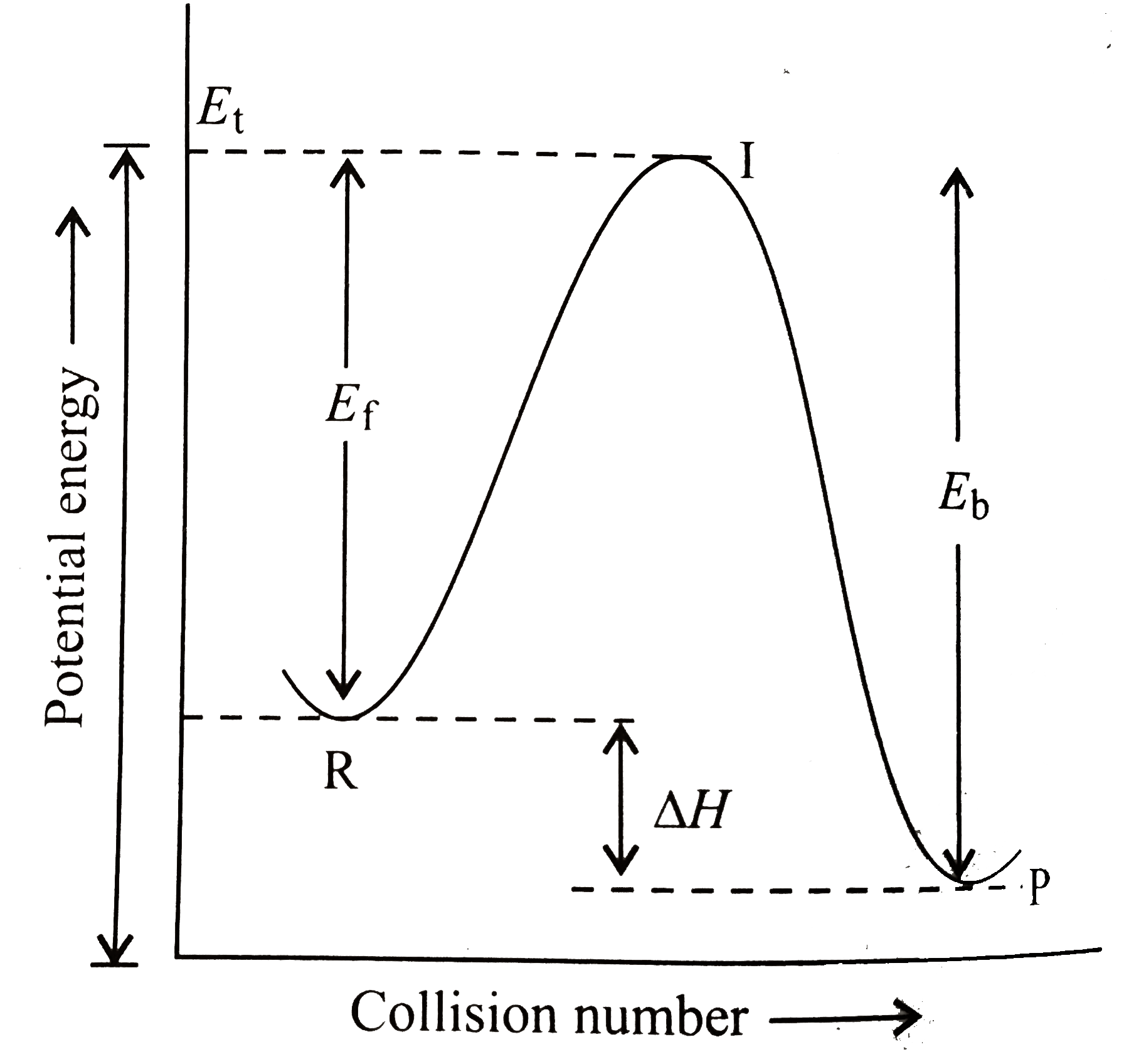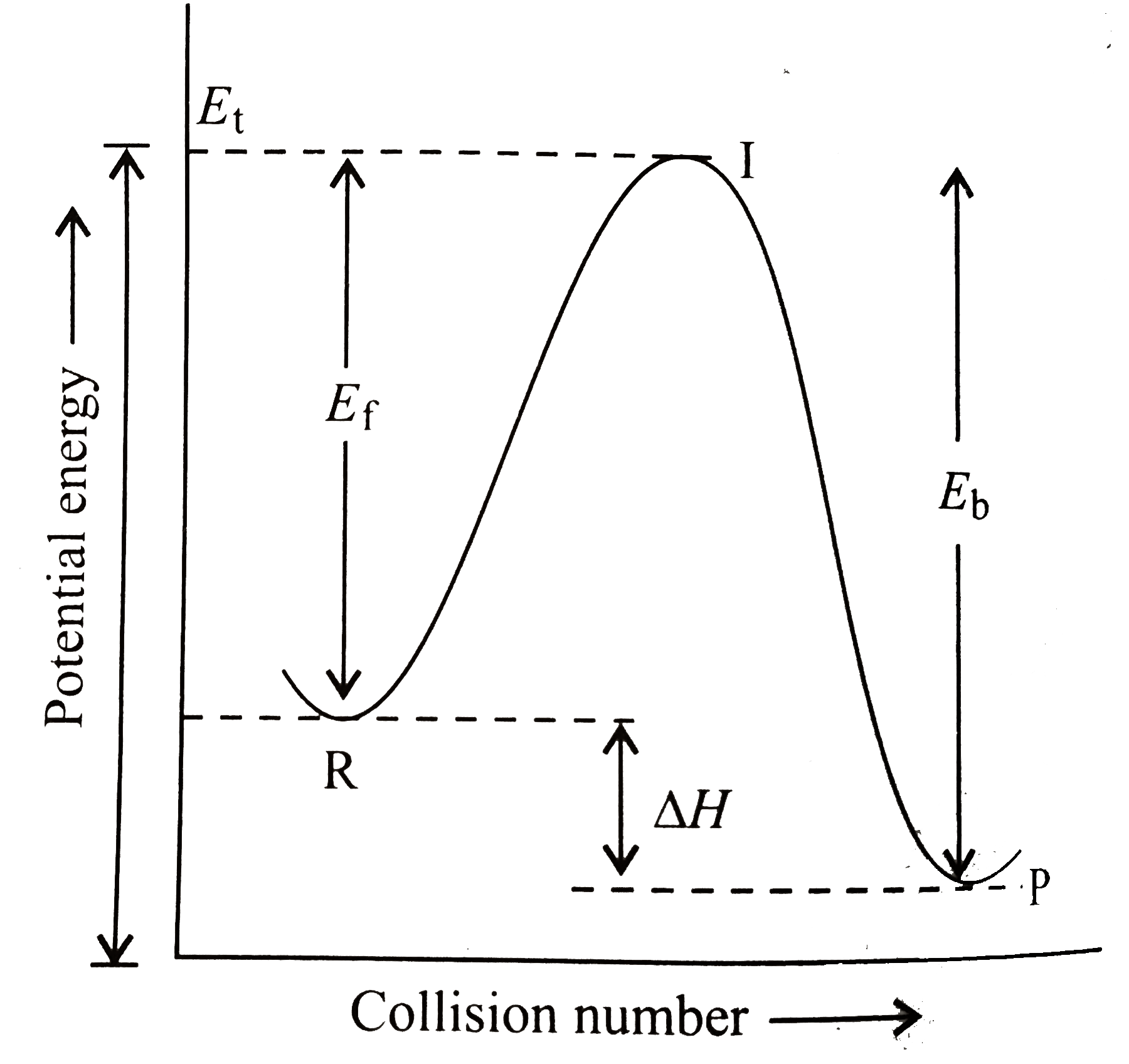A first order reaction has very high value of activation energy.
T or F
The correct Answer is:T
To determine whether the statement "A first order reaction has a very high value of activation energy" is true or false, we can analyze the characteristics of first order reactions and the concept of activation energy.
1. Understanding First Order Reactions:
- First order reactions are those whose rate depends linearly on the concentration of one reactant. The rate law can be expressed as:
Rate=k(A)
where k is the rate constant and (A) is the concentration of the reactant.
2. Defining Activation Energy:
- Activation energy (Ea) is the minimum energy required for a chemical reaction to occur. It is the energy barrier that reactants must overcome to be converted into products.
3. Characteristics of Activation Energy:
- Activation energy can vary significantly among different reactions. Some reactions have low activation energies, while others have high activation energies. The value of activation energy is not inherently tied to the order of the reaction (first, second, etc.).
4. Evaluating the Statement:
- The statement claims that first order reactions have a very high value of activation energy. While some first order reactions can indeed have high activation energies, it is not a universal characteristic of all first order reactions. Therefore, the statement is not necessarily true for all first order reactions.
5. Conclusion:
- Since the statement suggests a generalization that does not hold true for all first order reactions, we conclude that the statement is False.
Final Answer:
False
- First order reactions are those whose rate depends linearly on the concentration of one reactant. The rate law can be expressed as:
Rate=k(A)
where k is the rate constant and (A) is the concentration of the reactant.
- Activation energy (Ea) is the minimum energy required for a chemical reaction to occur. It is the energy barrier that reactants must overcome to be converted into products.
- Activation energy can vary significantly among different reactions. Some reactions have low activation energies, while others have high activation energies. The value of activation energy is not inherently tied to the order of the reaction (first, second, etc.).
- The statement claims that first order reactions have a very high value of activation energy. While some first order reactions can indeed have high activation energies, it is not a universal characteristic of all first order reactions. Therefore, the statement is not necessarily true for all first order reactions.
- Since the statement suggests a generalization that does not hold true for all first order reactions, we conclude that the statement is False.
False
Topper's Solved these Questions
- CHEMICAL KINETICSBOOK - CENGAGE CHEMISTRY ENGLISHCHAPTER - CHEMICAL KINETICSEXERCISE - Archives Multiple Correct
5 Videos
- CHEMICAL KINETICSBOOK - CENGAGE CHEMISTRY ENGLISHCHAPTER - CHEMICAL KINETICSEXERCISE - Archives Single Correct
19 Videos
- CHEMICAL KINETICSBOOK - CENGAGE CHEMISTRY ENGLISHCHAPTER - CHEMICAL KINETICSEXERCISE - Exercises Fill In The Blanks
37 Videos
- CARBOXYLIC ACIDS AND THEIR DERIVATIVESBOOK - CENGAGE CHEMISTRY ENGLISHCHAPTER - CARBOXYLIC ACIDS AND THEIR DERIVATIVESEXERCISE - Exercises Archives (Analytical And Descriptive)
34 Videos
- COORDINATION COMPOUNDSBOOK - CENGAGE CHEMISTRY ENGLISHCHAPTER - COORDINATION COMPOUNDSEXERCISE - Archives Subjective
18 Videos
Similar Questions
Knowledge Check
Which of the following reactions has zero activation energy?
A B
B C
C D
D
The chemical reactions in which the reactants require high amount of activation energy are generally
View SolutionAll first order reactions are unimolecular.
T or F
View SolutionA colliison between reactant molecules must occur with a certain minimum energy before it is effective in yielding Product molecules. This minimum energy is called activation energy Ea Large the value of activation energy, smaller the value of rate constant k. Larger is the value of activation energy, greater is the effect of temperature rise on rate constant k.

Ef= Activation energy of forward reaction
Eb= Activation energy of backward reaction
ΔH=Ef−Eb
Ef= threshold energy
The activation eneries for forward and backward reactions in a chemical reaction are 30.5 and 45.4kJmol−1 respectively. The reaction is
View SolutionA colliison between reactant molecules must occur with a certain minimum energy before it is effective in yielding Product molecules. This minimum energy is called activation energy Ea Large the value of activation energy, smaller the value of rate constant k. Larger is the value of activation energy, greater is the effect of temperature rise on rate constant k.

Ef= Activation energy of forward reaction
Eb= Activation energy of backward reaction
ΔH=Ef−Eb
Ef= threshold energy
The rate constant of a certain reaction is given by k=Ae−Ea/RT
(where A= Arrhenius constant). Which factor should be lowered so that the rate of reaction may increase?
View SolutionIf a first order reaction has activation energy of 25000 cal and a frequency factor of 5×1012sec−1 , at what temperature will the reaction rate have a half-life of
1 minute
View SolutionIf a first order reaction has activation energy of 25000 cal and a frequency factor of 5×1012sec−1 , at what temperature will the reaction rate have a half-life of
1 minute
View SolutionIf a first order reaction has activation energy of 25000 cal and a frequency factor of 5×1012sec−1 , at what temperature will the reaction rate have a half-life of
1 minute
View Solution